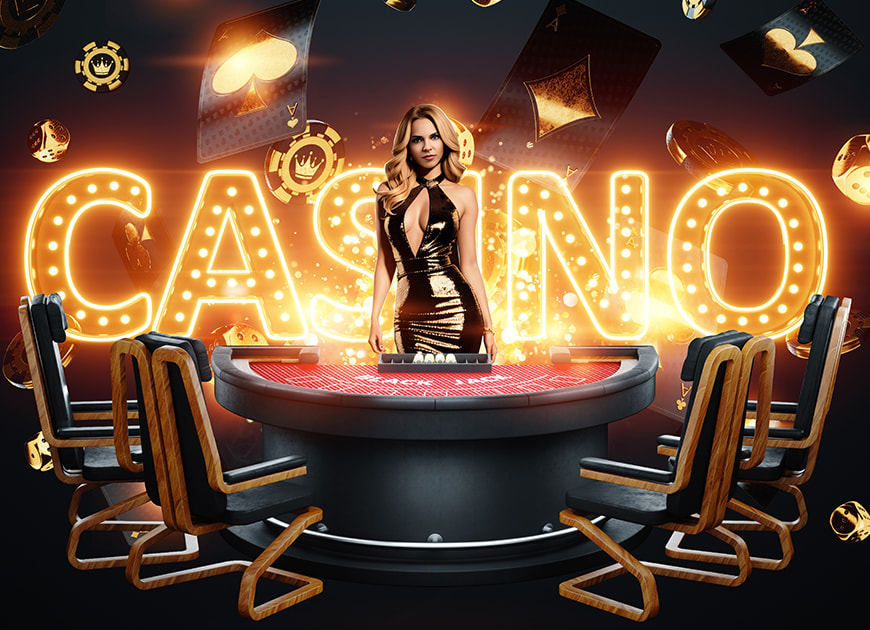In a vibrant and stimulating world of casinos, where fortune and tactics intertwine, color and design play a critical role in attracting gamblers. From the moment visitors step into a casino or log into a gaming website, they are immersed in a sightly feast that captures their attention and lures them to discover further. mmlive Vivid colors, engaging graphics, and innovative layouts are meticulously crafted to create an environment of thrill and anticipation, ultimately enhancing the gaming encounter.
While players navigate through the dynamic landscape of casino games, they encounter a range of designs that not only serve visual purposes but also influence feelings and decision-making. Hues like scarlet and yellow symbolize riches and luck, while soothing navy and emeralds can create a much relaxed environment. Understanding how these elements work together enables casinos to create an inviting and stimulating atmosphere that encourages players to interact with the games, invest more time at the tables, and increase their general enjoyment.
The Study of Hue in Gaming Establishments
Tint plays a crucial role in the creation of gaming experiences, shaping players’ emotional states and behaviors. Lively and striking shades, such as red and yellow, are often used to stimulate thrill and attract focus. These hues create a feeling immediacy and energy, encouraging players to participate more readily with the experience. By intentionally selecting tints, creators aim to elicit feelings of joy and excitement, which can enhance the total player experience.
Distinct colors also have psychological meanings that can influence how gamblers perceive their odds of success. For case, emerald is commonly associated with good fortune and prosperity, making it a popular choice in games like the roulette wheel and poker tables. This link can cause gamblers to feel more hopeful and confident in their gameplay, ultimately motivating them to bet more. Understanding these associations allows game developers to create environments that enhance player enjoyment and retention.
Moreover, the layout of gaming interfaces often uses color gradients and differing hues to instruct players’ responses. For case, successful outcomes may be emphasized with vivid, opposing shades, creating a visual reward. This technique supports successful results and promotes repeated gameplay. By exploiting the science of color, gaming venues can design activities that not only attract participants but also hold them interested and dedicated in their game experience.
Design Features that Attract Gamers
The visual appeal of casino games is largely influenced by the implementation of bold colors. Bright and contrasting colors are deliberately chosen to create an inviting atmosphere that grabs attention. For example, crimson and golds often signify good fortune and wealth, which is why they are common in the color schemes of gaming machines and game surfaces. These colors not only draw players in, but they also evoke emotions associated with excitement and anticipation, enhancing the overall gaming experience.
In addition to color, the aesthetic and organization of casino games play a significant role in captivating players. Games are designed to be user-friendly, ensuring that players can quickly understand the rules and gameplay. Accessible interfaces, along with captivating graphics and animations, help maintain player interest and encourage longer play sessions. The physical elements, such as the texture of the controls and the sounds of the games, also contribute to a comprehensive sensory experience that keeps players engaged.
Finally, conceptual elements in game design can greatly influence gaming decisions. Many gambling games are inspired by media, fairy tales, or adventure themes, featuring symbols and characters that resonate with players. These themes create a sense of engagement and relatability, making each game feel distinct. When players feel a connection to the concept, they are more likely to opt for that game over others, leading to higher participation and enthusiasm within the casino environment.
Case Studies: Successful Gambling Table Game Designs

One prime example of effective casino game design is the acclaimed slot machine series themed around hit movies. Games such as those based on the The Wizard of Oz and Game of thrones utilize bright colors and high-quality graphics to engage players in well-known narratives. The employment of dynamic visuals and captivating sound effects captures the interest of players, creating an affective connection to the theme. This tactic merely encourages longer play but also enhances the overall gaming experience, yielding increased player retention.
Another effective case is the application of the psychology of color in table games like blackjack and the wheel. Casinos often create these games with deep reds and greens, colors traditionally connected with luck and wealth. For instance, the emerald felt on a 21 table provides a calming effect, while the red accents in the wheel invite excitement. This deliberate use of color helps to create an inviting atmosphere that motivates players to engage, satisfying their psychological impulses and increasing their enjoyment.
Finally, social casino games that feature social features and lively, lively designs have achieved remarkable success in engaging players. bắn cá mmlive Games like Zynga’s Poker and Slotomania leverage bright colors and playful animations to establish an inviting online environment. The addition of leaderboards, community sharing options, and in-app rewards promotes competition and community, drawing players in for longer sessions. Such designs not just make the games visually attractive but also emphasize social interaction, a vital factor in player retention and engagement within online casino environments.